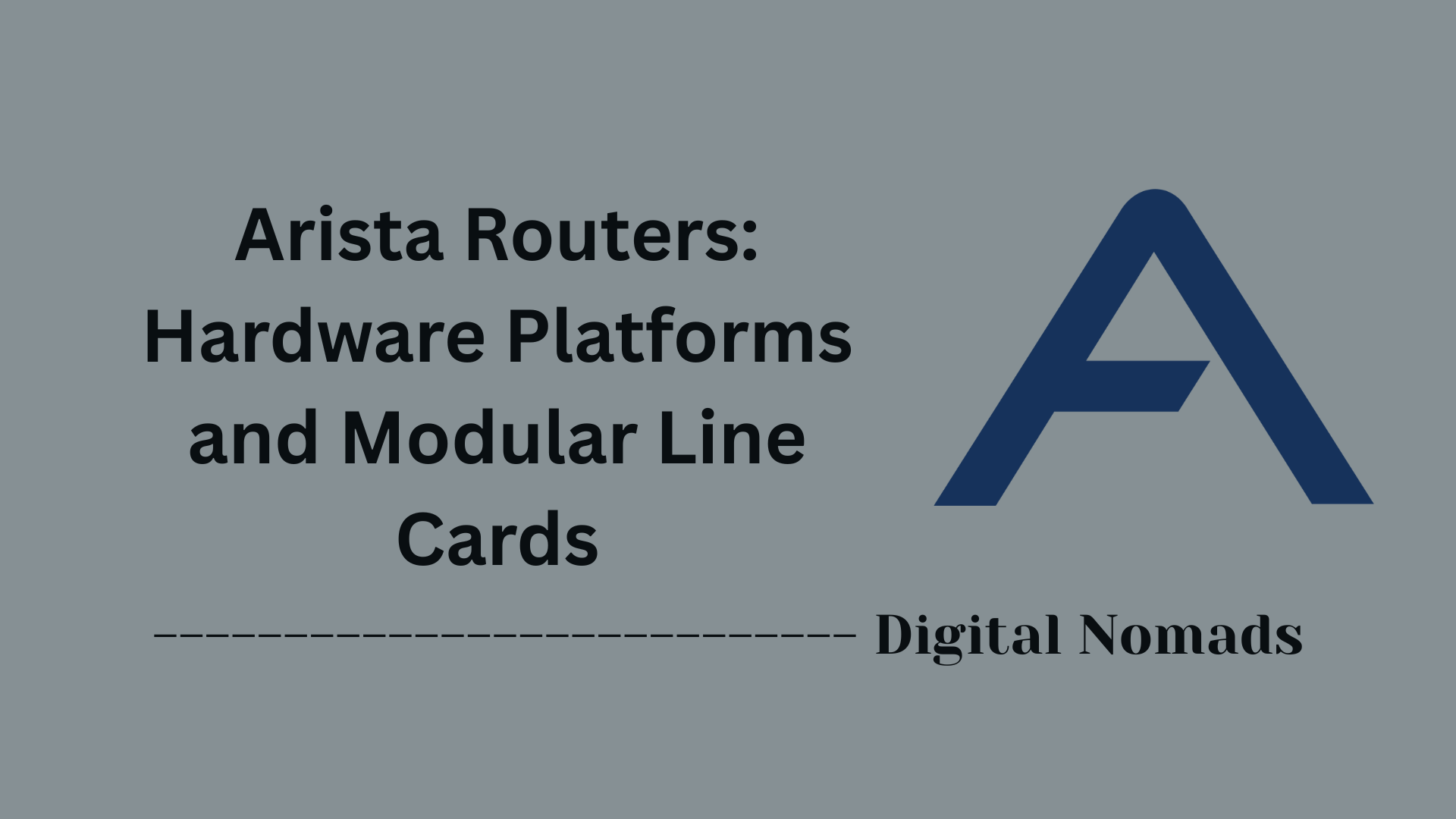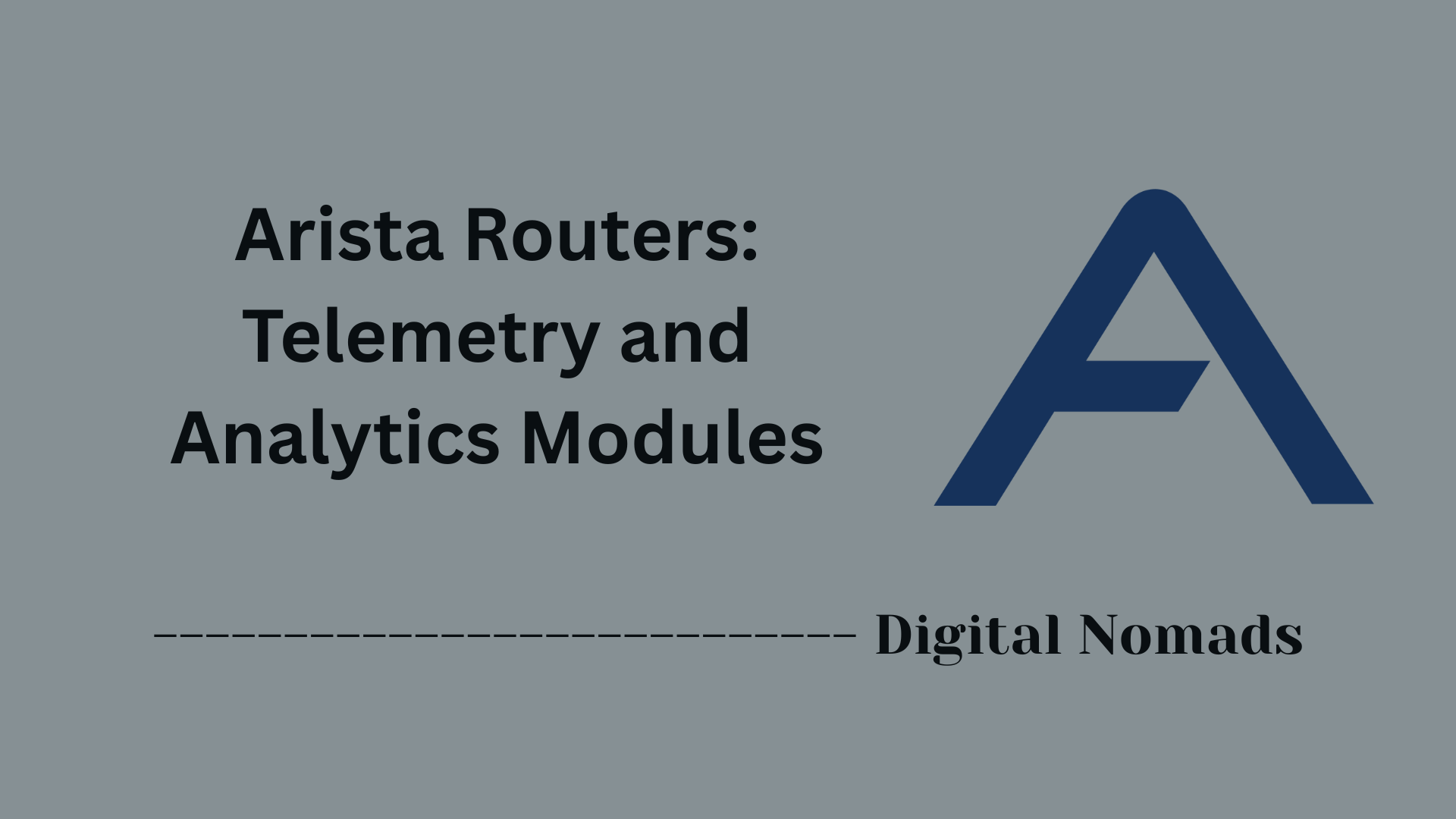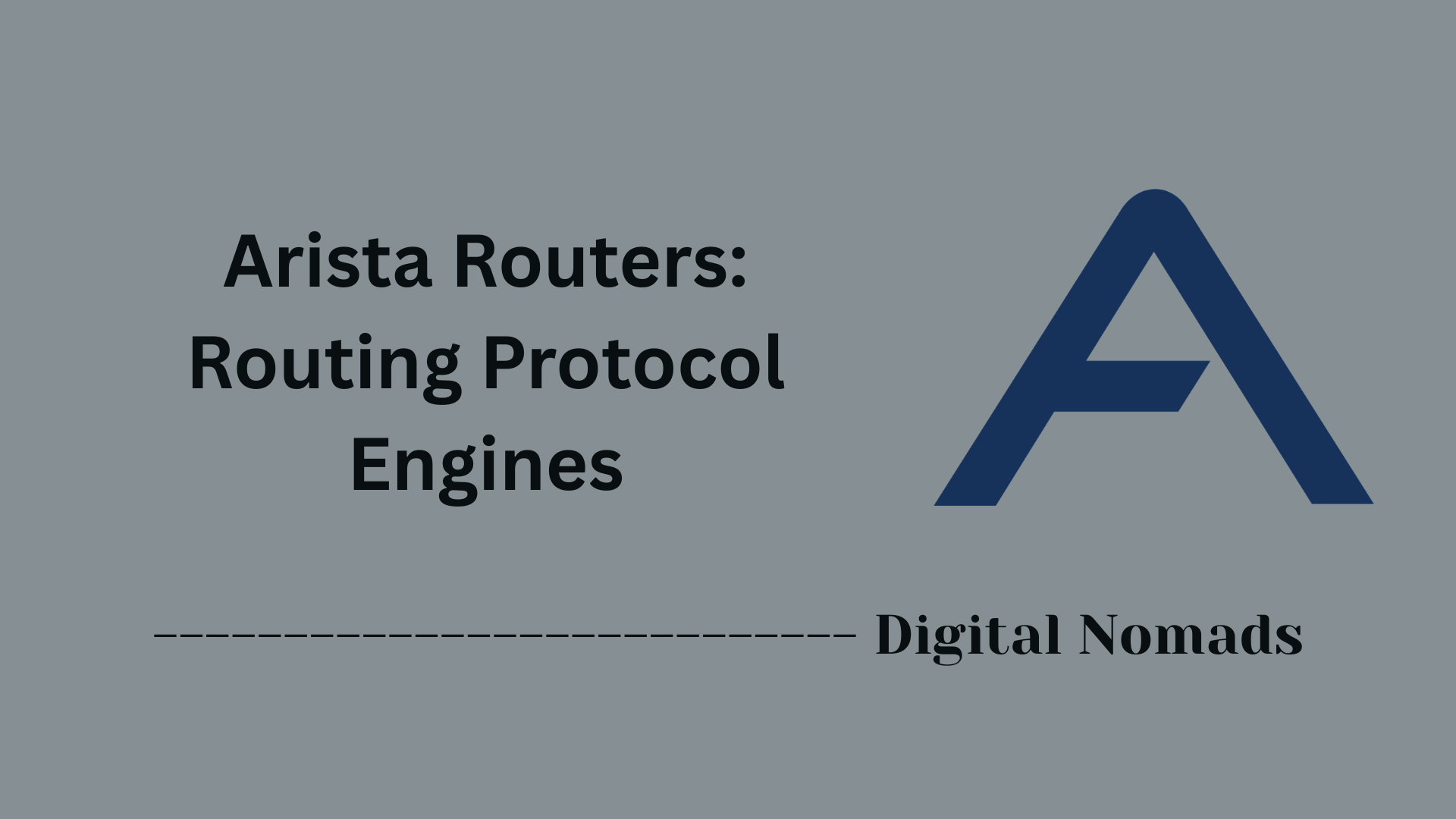Table of Contents
- Overview
- Arista EOS Programmability Components
- Automation Frameworks and Tools
- Supported Standards and Protocols
- Example Use Cases
- Conclusion
Overview
Arista Routers are high-performance network devices designed to deliver robust, programmable, and highly automated network infrastructure. At the heart of Arista’s approach is their Extensible Operating System (EOS), which runs on a Linux foundation and is engineered for deep programmability, open standards, and seamless integration with modern automation frameworks.
What Is It?
- Programmability refers to the ability to control, configure, and monitor routing devices using software interfaces and open APIs, rather than manual processes.
- Automation Frameworks are tools and platforms that allow network operators to automate repetitive tasks, such as provisioning, compliance checks, telemetry collection, and troubleshooting, which speeds up operations and reduces risk of human error.
- Arista’s ecosystem includes EOS itself, eAPI (a programmatic interface for the CLI), OpenConfig/YANG models, and event-driven scripting, plus larger systems like CloudVision for central automation and analytics.
Why You Need to Know About It
- As networks grow in complexity and scale, manual configuration can no longer keep pace with business needs. Programmability and automation are essential to:
- Accelerate deployments: Provision new infrastructure, services, and policy changes quickly and accurately.
- Reduce operational risk: Automation minimizes human error, ensures consistency, and supports compliance mandates.
- Improve agility: Network teams can rapidly adapt to business and application needs thanks to programmable interfaces and APIs.
- Enable modern workflows: Integration with DevOps tools and CI/CD pipelines brings networking into the same agile processes as the rest of IT.
- Support innovation: Open APIs and event-driven frameworks let organizations build custom solutions and value-added workflows on top of Arista platforms.
How It Works
- Open Linux Foundation: EOS runs on a standard Linux kernel, allowing access to system features, scripting languages, and Linux tools. This openness makes it easy for developers and network engineers to interact with the system using familiar methods.
- Rich APIs and Protocols: Operators can use:
- eAPI: Exposes the EOS CLI over a JSON-RPC interface for remote, programmatic access to configuration and status data.
- OpenConfig & YANG Models: Enable model-driven management using open, vendor-neutral standards. This means analytics, configuration, and monitoring can be handled in a consistent way across different devices.
- Native SDKs and Object-Model APIs: Let developers write Python or C++ applications that run directly on the device, giving deeper visibility and control.
- CloudVision: Offers a centralized point for automation, orchestration, provisioning, rollback, and policy management—bringing powerful GUIs and northbound APIs together.
- Event-Driven Automation: Tools like the Advanced Event Manager (AEM) can watch system state, trigger custom scripts, and automate corrective actions in real time.
- Integration with DevOps Ecosystem: Arista routers work natively with popular automation tools like Ansible, Chef, and Puppet, so network automation fits hand-in-glove with server and application automation efforts.
With these capabilities, Arista Routers allow organizations to build scalable, agile, and resilient network operations—critical for today’s data centers, enterprise WANs, and cloud-driven environments.
Arista EOS Programmability Components
These are the core programmability components that make Arista EOS (Extensible Operating System) flexible, programmable, and seamlessly integrable within automation frameworks:
- Linux-Based Foundation: EOS runs natively on Linux, granting access to an open environment where users can leverage standard Linux tools, write and execute native scripts, or deploy Docker containers for advanced customization and automation.
- eAPI (Extensible API): A JSON-RPC based API that exposes the EOS CLI to remote systems for programmatic configuration retrieval and changes. This enables integration with a range of automation platforms as well as custom tools.
- OpenConfig & YANG Models: Provides vendor-neutral, model-driven configuration and state management for network devices. Supports streaming telemetry and programmatic control through open standards.
- Native SDK: Allows customers to build and deploy C++ or Python apps directly on the switch, interacting with EOS system agents and hardware for custom behaviors.
- Object Model APIs (Python/Go): Supports on-device scripting and automation using native Python and Go language bindings for deep control and introspection.
- DirectFlow & OpenFlow: Enables software-defined network (SDN) style programmability for traffic flow management and advanced filtering use cases.
Automation Frameworks and Tools
These frameworks and tools empower Arista EOS with advanced automation, streamlined deployment, and integrated operations for modern network environments:
- CloudVision: A centralized platform for network-wide automation, CloudVision abstracts physical devices, providing a single point for provisioning, upgrades, rollback, compliance audits, and workflow automation. It supports integration with external controllers via open APIs (such as OVSDB and JSON) and is a key tool for orchestrating both physical and virtual resources across the network[1][2].
- Zero Touch Provisioning (ZTP): ZTP enables effortless onboarding and automated initial configuration of switches and routers. Using standards-based tools (DHCP, TFTP/HTTP), devices can be provisioned in minutes with user-defined templates for dynamic deployments[1].
- Integration with Automation Toolchains: Arista EOS works seamlessly with popular DevOps and automation tools like Ansible, Chef, and Puppet to manage configuration, provisioning, and workflow orchestration—helping unify network and compute automation[3][5][6][7].
- Advanced Event Manager (AEM): Enables custom, event-driven automation. AEM can run scripts or execute commands in response to network or system events, supporting real-time remediation and reporting.
- Arista Validated Designs (AVD): Offered as an Ansible collection, AVD allows modular, scalable, and repeatable network configuration generation and deployment. It supports full automation of deployment from zero-touch bring-up through production readiness[7].
- eAPI and Object-Model APIs: Using eAPI (JSON-RPC over HTTP) and native object-model APIs in Python/Go, automation teams can script configurations and collect state data, integrating EOS into CI/CD pipelines and custom network workflows.
- ZTPServer: An open-source tool for provisioning bare-metal network elements, ZTPServer automates large-scale deployments, integrating with AEM and ZTP for scalable build-outs[1].
Supported Standards and Protocols
Arista EOS supports a broad set of networking standards and protocols, ensuring interoperability, programmability, and integration across modern IT and automation environments. Below are key categories and their core standards:
-
Routing Protocols:
- OSPFv2 / OSPFv3 (Open Shortest Path First) – dynamic link-state routing for IPv4 and IPv6
- BGP (Border Gateway Protocol) – inter-domain routing for scalable network architectures
- IS-IS (Intermediate System-to-Intermediate System)
- RIP (Routing Information Protocol) – legacy protocol support
-
Layer 2 Protocols and Bridging:
- STP, RSTP, MST, and Rapid-PVST (various Spanning Tree Protocol implementations to prevent loops and support VLANs)
- LACP (Link Aggregation Control Protocol)
- LLDP (Link Layer Discovery Protocol)
- MACsec (Media Access Control Security)
- VXLAN (Virtual Extensible LAN) – network virtualization and overlays
-
Programmability & Telemetry:
- eAPI (JSON-RPC over HTTP) for programmatic CLI access
- OpenConfig/YANG models for model-driven management and telemetry
- gRPC/gNOI (Google Remote Procedure Call/Network Operations Interface) for streaming telemetry and configuration
- REST/RESTCONF and NETCONF for standards-based management API integration
-
Security and Management:
- SNMP (Simple Network Management Protocol), Syslog, NTP/PTP (Precision Time Protocol) for accurate time sync
- SSH, HTTPS, and XMPP for secure management and automation sessions
-
Automation Integration:
- Supports direct integration with Ansible, Puppet, Chef, and other DevOps automation tools
- Native Linux APIs and scripting, plus Docker container support
-
SDN & Flow Programming:
- OpenFlow and DirectFlow – software-defined traffic manipulation and routing
| Category | Standards & Protocols | Use Cases & Integration |
|---|---|---|
| Routing | BGP, OSPFv2/v3, IS-IS, RIP | Internet and MPLS edge, data center core, campus aggregation |
| Layer 2 | STP, RSTP, MST, LACP, LLDP, MACsec, VXLAN | Bridging, link aggregation, topology discovery, security, overlays |
| Programmability | eAPI, OpenConfig/YANG, gRPC/gNOI, REST, NETCONF | Automation frameworks, telemetry, DevOps integrations |
| Security & Mgmt | SNMP, Syslog, NTP, PTP, SSH, HTTPS, XMPP | Monitoring, management, secure remote access, time sync |
| SDN | OpenFlow, DirectFlow | SDN controllers, dynamic traffic engineering |
Example Use Cases
These real-world scenarios demonstrate how Arista EOS programmability and automation frameworks enhance network efficiency, agility, and resiliency:
- Automated Data Center Provisioning: Leveraging Zero Touch Provisioning (ZTP) in combination with CloudVision, teams automate the deployment and configuration of data center switches. Devices are provisioned at power-up with pre-defined templates, minimizing manual intervention and speeding up rollout.
- Network Upgrades and Rollbacks: CloudVision’s centralized control and automation allow for network-wide software upgrades and compliance checks with the ability to schedule and automate rollbacks, ensuring safe and efficient platform updates across large infrastructures.
- Continuous Compliance and Auditing: Integration with automation tools (Ansible, Chef, Puppet) enables ongoing policy compliance validation and automated remediation, reducing operational risk and keeping network configurations consistent.
- CI/CD Pipeline Integration: Using eAPI and Arista ANTA (Network Test Automation) within DevOps workflows, organizations can validate desired network state and run automated tests during code deployments, supporting agile infrastructure as code methodologies.
- Event-Driven Automation: Advanced Event Manager (AEM) scripts let operators trigger automated actions (such as self-healing scripts, interface resets, or notifications) in response to specific system or network events, enhancing resiliency and reducing downtime.
- Scalable Multi-Site Deployments: By using Arista Validated Designs (AVD), operators model and generate modular configurations for multi-site environments, ensuring consistency and repeatability even at large scale.
- Granular Traffic Engineering: With DirectFlow and OpenFlow, network engineers program custom traffic forwarding, security policies, or monitoring rules dynamically, supporting hybrid-cloud, microsegmentation, or specialized research applications.
Conclusion
In conclusion, Arista routers stand out in the networking world by offering a highly programmable and automation-friendly platform through their EOS operating system. With a solid Linux foundation, diverse APIs like eAPI and OpenConfig, and powerful automation frameworks such as CloudVision, ZTP, and AEM, Arista empowers network teams to streamline operations, improve agility, and reduce manual errors. The extensive support for open standards, integration with popular DevOps tools, and real-world use cases—from automated data center provisioning to event-driven self-healing—demonstrate how Arista’s approach enables modern, scalable, and resilient network infrastructures.
Thank you for joining us on this deep dive into Arista’s programmability and automation capabilities. We hope this overview inspires you to explore these tools and frameworks for your own network environments. Stay curious and keep innovating!




